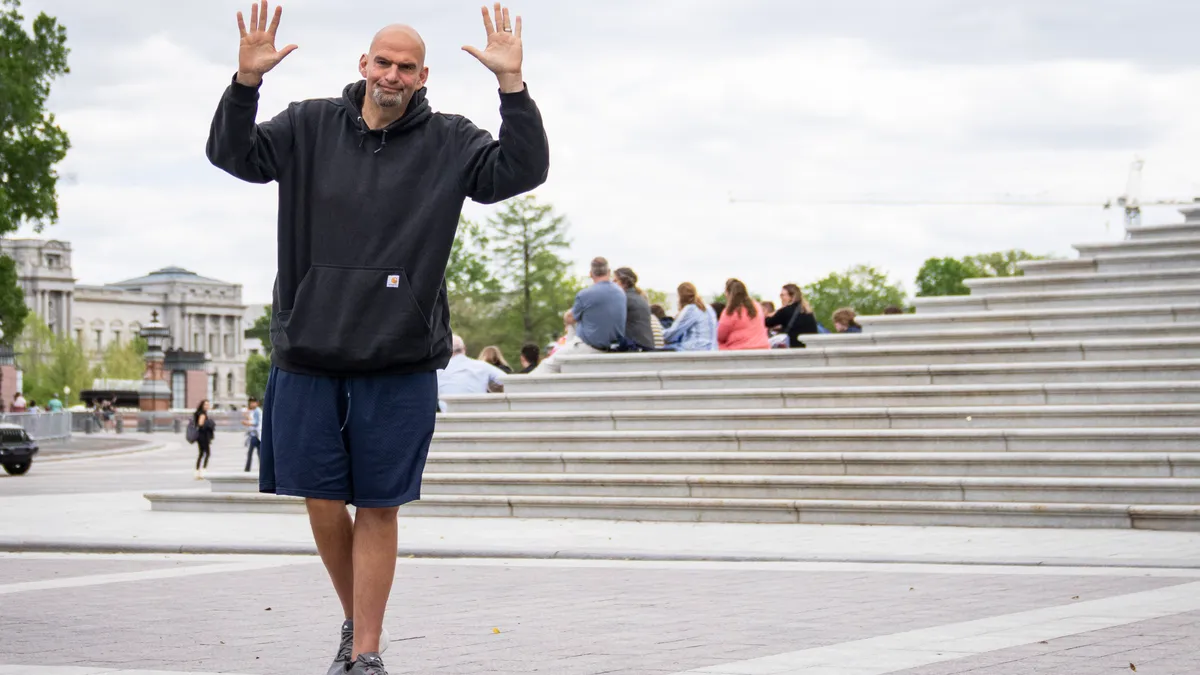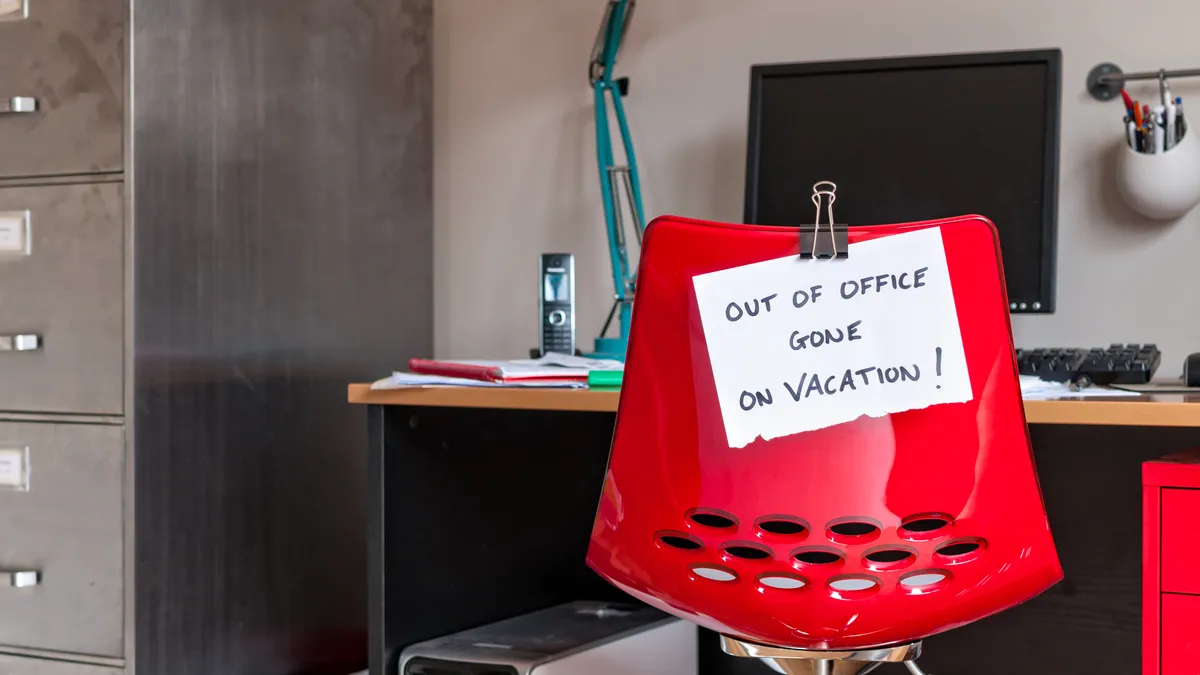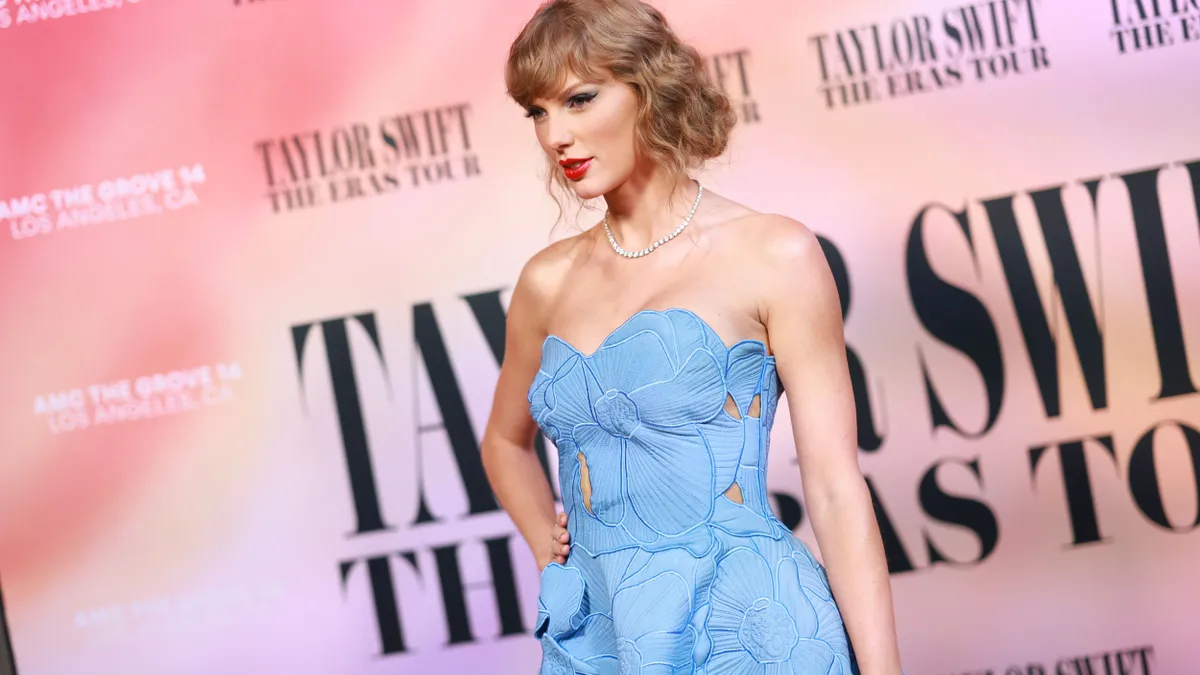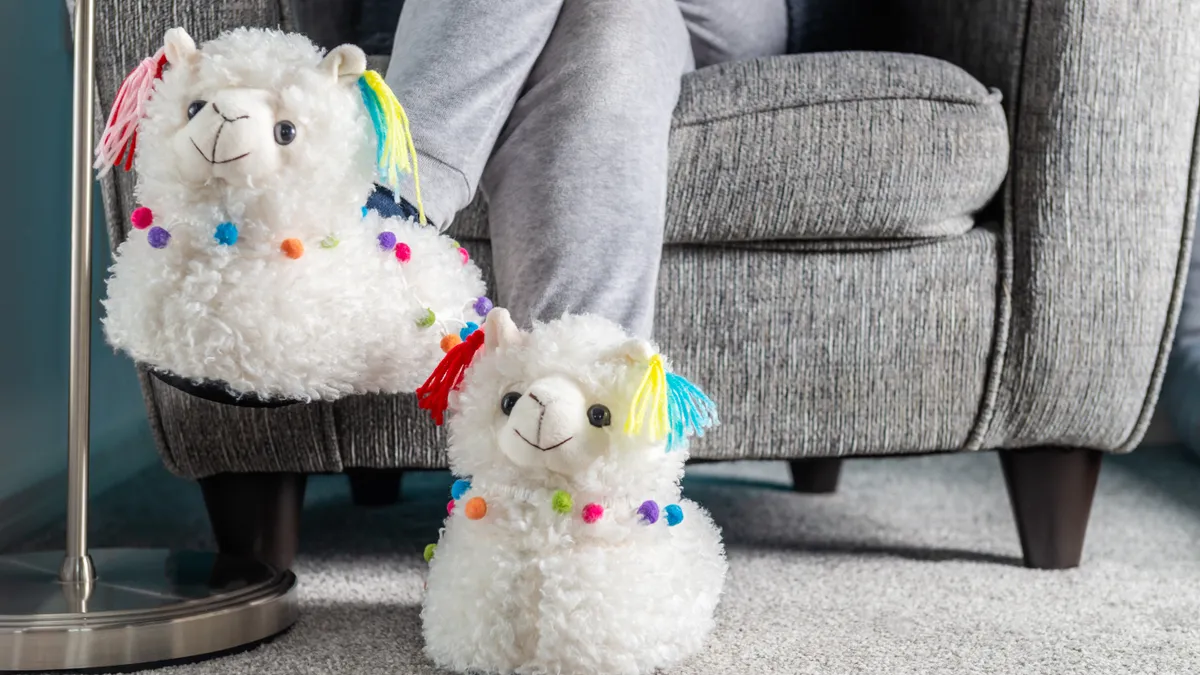The weirdest part about working from an office again is shoes. Wearing them. All day.
I’ve worked remotely in various jobs since early 2020, which means my default seating position is cross-legged at my desk in my dining room. There’s usually a cat on my lap batting occasionally — or incessantly — at my keyboard. I wear slippers to pad to the kitchen for a little treat when I file a story or to remove said cats from popping in on webinars.
Last week, Industry Dive — HR Dive’s parent company — brought me and my colleagues to the main office in Washington, D.C., for team building. It was the first time I’d worked from an office in three years, and I packed approximately 100 outfits for my three-day trip, unsure of how to dress in an office, especially one in a city experiencing 80-degree temperatures in October. I packed cardigans, ready to layer with the best of them. And shoes.
But I needn’t have worried. Industry Dive, like many companies, doesn’t expect suits, ties, dresses and heels. In fact, our handbook characterizes the dress code as “business casual, emphasis on casual.”
The dress code debate has experienced renewed fervor since September, when Senate Majority Leader Chuck Schumer, D-N.Y., said that senators could wear what they wanted in the chamber, guidance at odds with years of suit-touting among elected leaders. The assertion gave credence to the gym shorts and sweatshirts Sen. John Fetterman, D-Penn., is known to sport. The backlash among members of the Senate was immediate, leading to the passage a week later of a resolution requiring business attire on the Senate floor.
James Neave, head of data science at Adzuna, a job ad search engine, characterized the push for a more formal dress code in the Senate as “a backward step.”
“What they’ve chosen to do is at odds with what the data is showing in the labor market more broadly,” Neave said.
In Adzuna’s analysis of 7.6 million job ads in the U.S. posted through September, only 0.08% mention a dress code. Of those that do, 70% list a “casual” dress code, 30% a “business casual” dress code, and 0.2% either a “smart casual” or a “smart dress” dress code.
“No doubt the pandemic and the whole work-from-home changes generally accelerated this,” Neave said. “Any organization trying to organize any kind of smart dress code is definitely going against the tide.”
The business world has steadily seen more companies adopt casual dress codes. Last year, Virgin Atlantic scrapped its gendered dress code and opted to let workers “wear the clothing that expresses how they identify or present themselves.” And in 2019, Walmart and Goldman Sachs implemented more casual requirements.
While it’s unlikely many companies will toss the shoe requirement out the window, it seems more might be accepting of Fetterman-esque shorts and hoodies. No word on the cats yet, though.

































